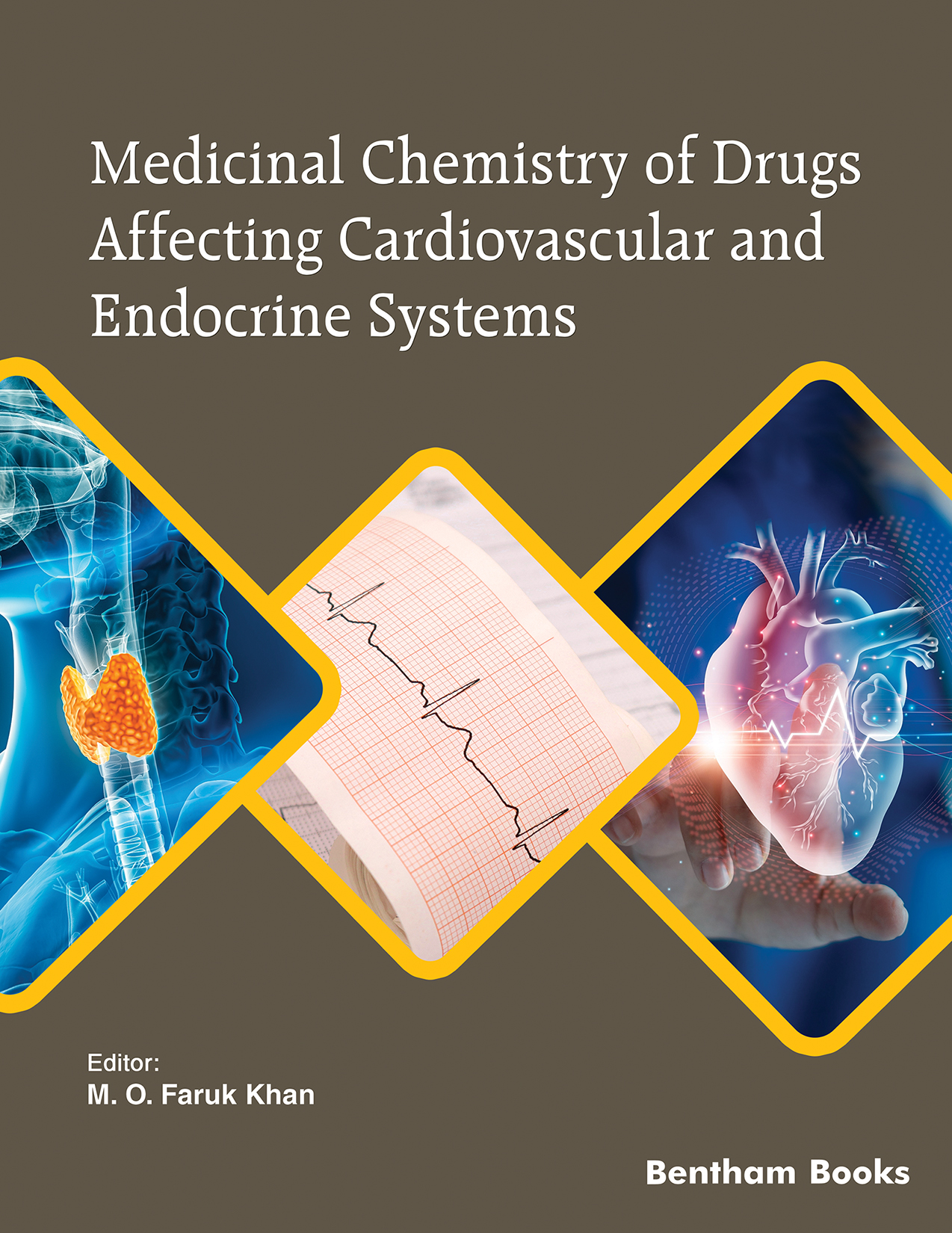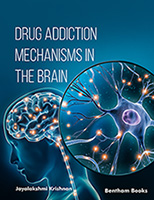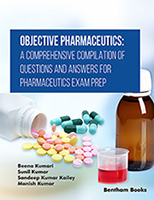This is the third volume of the 4-volume eBook series, “Medicinal Chemistry for Pharmacy Students”. The primary objective of this e-Book series is to educate PharmD students in the area of medicinal chemistry and serve as a reference guide to pharmacists on aspects of the chemical basis of drug action. A thorough discussion of key physicochemical parameters of therapeutic agents and how they affect the biochemical, pharmacological, pharmacokinetic processes and clinical use of these agents is the primary focus of the whole book. The rationale for putting together an e-Book of this nature is to equip PharmD students with the scientific basis to competently evaluate, recommend and counsel patients and healthcare professionals regarding the safe, appropriate, and cost-effective use of medications.
This third volume of the series is comprised of 8 chapters focusing on a comprehensive account of medicinal chemistry of drugs affecting the cardiovascular and endocrine systems. It provides the mechanism of drug action, detailed structure-activity relationships and metabolism as well as the clinical significance of drugs affecting the cardiovascular and endocrine system to give the knowledge base for pharmacists.
Chapter 1 provides a comprehensive account of the medicinal chemistry of drugs affecting the renin-angiotensin system (RAS). This chapter includes pathophysiologic principles, mechanism of action, structure-activity relationships (SAR) and metabolism of drugs affecting RAS including enzymes and hormones and their roles in blood pressure, structures, binding, and chemistry and SAR of the antagonists involved in RAS such as the angiotensin-converting enzyme inhibitors (ACEIs), angiotensin receptor blockers (ARBs) and renin inhibitors. It also discusses the clinical significance and therapeutic evaluations of these classes of drugs by solving case studies as well as the discovery process of ACEIs and ARBs.
Chapter 2 is a comprehensive account of the medicinal chemistry of antihypertensive drugs, Ca2+-channel blockers (CCBs). It details the pathophysiologic principles, mechanism of drug action, SAR, classifications, and their clinical significance.
Chapter 3 focuses on the medicinal chemistry of the diuretic agents. It provides a detailed account of the pathophysiologic principles of diuretics, the mechanism of drug action and the SAR of these drugs. The chemical principles and classification of diuretics, their metabolism and pharmacokinetic parameters, and the clinical significance as well as safety parameters of these drugs have been clearly delineated.
Chapter 4 is a comprehensive account of the medicinal chemistry of the anticoagulants, antiplatelets and thrombolytic agents and their relatives – their pathophysiologic principles, mechanism of action, SAR and metabolism. Topics include the physiology and pathophysiology of clotting, major classes of anticoagulant drugs and their structures and binding, distinctions among drugs used as antiplatelets, anticoagulants, and fibrinolytic agents and delineation of the clinical significance, therapeutic evaluations and discovery story of these classes of drugs.
Chapter 5 is a comprehensive account of the medicinal chemistry of antihistamines, H2 receptor (H2R) blockers, H3 receptor (H3R) blockers, and proton pump inhibitors (PPIs). It provides the pathophysiologic principles, mechanism of drug action, and detailed SAR of the drugs in these classes Topics include a concise account of the physiochemical properties of histamine and histamine receptors, chemical classes of antihistamines, H2R and H3R antagonists, the distinction between sedating and non-sedating antihistamines, as well as the first generation, second generation, and third generation antihistamines. It also discusses the structural features of cromolyn and related mast cell stabilizers as well as the proton pump inhibitors including their development, mechanism of action, and structural and physicochemical features.
Chapter 6 is a comprehensive account of diabetes and the medicinal chemistry of antidiabetic drugs. It discusses the physicochemical principles, mechanism of action, SAR, and metabolism of the antidiabetic drugs. The clinical features of diabetes and differentiation between type I and type II diabetes, various risk factors and corresponding mechanisms responsible for the development of diabetes and pathophysiologic mechanisms responsible for the clinical features of diabetes have also been discussed. A review of biosynthesis of insulin, its metabolic outcomes, regulation of insulin secretion, and insulin signaling have been explained. This chapter has classified all the injectable and oral antidiabetic drugs and provided their clinical significance as well.
Chapter 7 is a comprehensive account of the medicinal chemistry of hormonal therapy. It provides the physicochemical principles, mechanism of drug action, SAR, and drug metabolism of the hormonal agents. This chapter discusses in detail hormone replacement therapy (HRT), androgen replacement therapy (ART), oral contraceptive pills and gender-affirming hormone therapy. It also provides a detailed understanding of thyroid hormones and their clinical significance.
Chapter 8 provides a comprehensive account of the medicinal chemistry of drugs arising from structural modifications of prostanoids, which are naturally occurring eicosanoids. These drugs are used for a variety of disease states including but not limited to glaucoma, pulmonary arterial hypertension, and peptic ulcers. This chapter provides the pathophysiologic principles, mechanism of drug action, and SAR of these agents with their clinical significance.
The chapters in this volume are designed to guide the reader to review, integrate, and apply principles of medicinal chemistry to drug action of therapeutic agents. All concepts are illustrated with diagrams or figures, with the keywords highlighted, bulleted or numbered. Wherever needed, special boxes and case studies are included. In addition, each chapter is reinforced with student’s self-study guides and self-assessment questions. Special notations are highlighted using call-out boxes for visual effect. Tables and figures are used to augment the text as needed.
We would like to express our sincere gratitude to the contributing authors for their time and effort in completing this volume. We would also like to thank Bentham Science Publishers, particularly Ms. Asma Ahmed (Manager Publications) and Mr. Mahmood Alam (Director Publications) for their support. We are confident that this volume of the eBook series will guide students and educators of pharmacy and related health professions worldwide.
M. O. Faruk Khan
University of Charleston
School of Pharmacy
Charleston, WV
USA




